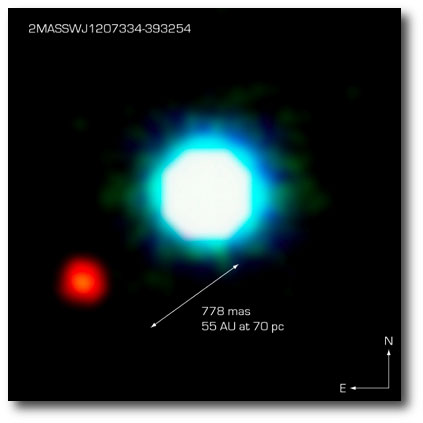
In a comment on yesterday’s core-accretion post, a reader anticipated that all is not hunky-dory with the core-accretion scenario for the formation of the gas giant planets in our solar system, and asked if is there any support for Alan Boss’ disk instability model. In the Boss model (described here by Alan, see also the buff 137-strong citation list) gas giant planets condense directly out of the protostellar disk as the result of gravitational instability in the disk.
The handy thing about an extrasolar planet web log is that you can express your opinions on the formation of extrasolar planets. In my opinion, there are a number of very serious difficulties with the hypothesis that gravitational instability is the dominant mechanism for giant planet formation. Here are three:
(1) In order to have gravitational instability work in the manner shown in the fragmentation simulations, you need to start with an axisymmetric disk that has a sufficiently low value for the Toomre Q parameter. That is, in order for the initial conditions in the successful Boss simulations to be valid, a growing protostellar disk needs to remain completely stable with respect to low-level non-axisymmetric disturbances until BOOM, it reaches a threshold Q value where it is prone to spiral instabilities that exponentiate on a near-orbital timescale.
In reality, I think that a growing (or alternately, a cooling) protostellar disk will be prone to low-level spiral disturbances that steadily transport mass inward and angular momentum outward, allowing the disk to avoid ever reaching the state where instabitilies can grow on an orbital timescale. (For a bulked-up version of this argument, see the papers (one and two) that I wrote with Vladimir Korchagin and Fred Adams on this issue).
(2) The core accretion model provides a very natural explanation for both the planet-metallicity correlation, as well as the paucity of Jovian-mass planets found in orbit around low-mass M type stars. The gravitational instability model predicts that the incidence of Jovian-mass planets should be independant of both the stellar metallicity and the parent star mass.
(3) There’s simply no way that the gravitational instability model can produce the 72 Earth Masses of heavy elements in HD 149026 b. (See this paper for a thorough discussion).
To be fair, there are also some thorny problems associated with core-accretion. In the next few posts of the giant planet formation series [1, 2, 3, 4 and 5] that we’ve been running, I’ll describe these in more detail.

Photo credit: ESO (VLT/NACO)
Another important point to stress is that Alan’s simulations certainly aren’t in error in the sense of being computationally wrong. It’s just that I don’t agree with the generic validity of the initial conditions. Indeed, I do think that gravitational instability sometimes plays a role in giant planet formation. The best example is probably the 5 Jupiter-mass companion to the brown dwarf 2M1207 discovered by Chauvin et al. last year. (The ESO press release on this system is here.) I see no way in which the core-accretion process could have made any headway at 55 AU in this particular system.
Finally, GJ 876, which is by far the best RV-characterized extrasolar planetary system, provides a tough challenge to both the gravitational instability and the core-accretion theories. The inner 7.5 Earth Mass planet in the GJ 876 system is almost certainly an accreted protoplanetary core (regardless of whether it formed in-situ, or migrated from a larger radius). It would be nearly impossible to form lil’ D via gravitational instability. The outer two planets, on the other hand, contain more than three Jupiters worth of mass, and stand in embarrassing conflict with the notion that core-accretion process is difficult to carry through to Jovian-mass completion in red-dwarf protostellar disks.
I would very much like the 411 on what went down in GJ 876’s protostellar disk.

Pingback: Centauri Dreams » Blog Archive » Two Ways to Build a Gas Giant
Pingback: systemic - Lonely Planet Guide to the Hyades
Pingback: Centauri Dreams » Blog Archive » Red Dwarfs: Dust, Details and Habitability